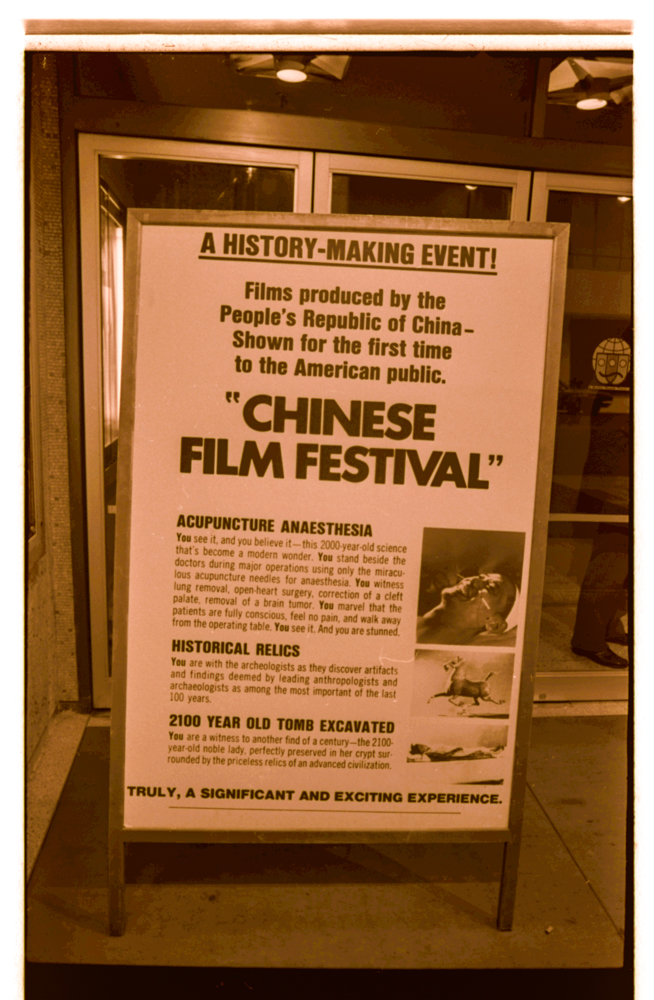On June 7, 1973, New Yorkers gathered at the now-defunct Loews Festival Theater on West 57th Street for what was self-advertised as a “History-Making Event.” The occasion was the Chinese Film Festival, the first of its kind, presenting three short documentaries produced in China specifically for American audiences: “2100-Year-Old Tomb Excavated,” “Historical Relics Unearthed During the Great Proletarian Revolution,” and “Acupunctural Anesthesia.” Each film, produced in 1972, featured English narration and an instructive tone, designed to bring Chinese science and history directly to Western viewers.
Two of the films turned the spotlight on archaeology. “2100-Year-Old Tomb Excavated” chronicled the astonishing 1971 discovery of Lady Xin Zhui’s tomb, a Han Dynasty burial chamber sealed for more than two millennia. The documentary lingered on her remarkably preserved body and the 1,400 treasures buried alongside her: shimmering silk robes, painted lacquerware, delicately carved wooden figurines, and even cosmetics and herbal remedies meant to accompany her in the afterlife.
“Historical Relics Unearthed During the Great Proletarian Revolution” widened the frame, showcasing burial silks once traded as far as the Roman Empire, bronze vessels of ceremonial splendor, and jade-laced funeral garments. Yet the narration struck a critical tone, highlighting the wealth of emperors and aristocrats while reminding viewers that such opulence was built on the labor of ordinary people.
If the first two films looked to the distant past, the third shocked audiences with scenes from modern operating rooms. “Acupunctural Anesthesia” documented Chinese surgeons performing major operations–from tonsillectomies to the removal of a lung and even a brain tumor–without chemical anesthesia. Instead, doctors inserted and lightly electrified acupuncture needles to block pain. Patients remained conscious throughout, chatting calmly with surgeons, even offering words of encouragement as scalpels cut into their bodies. One unforgettable scene showed a patient speaking to his doctor while his skull was open.
Presented by Tai Ming Enterprises, Sino-American Exports-Imports, Inc., and the China Trade Corporations, the festival was a cultural introduction. Through archaeology and medicine, the films invited American audiences to learn about China’s ancient legacy and modern innovation, offering a glimpse of a country still largely closed to outsiders but eager to shape how it was seen.
The film synopses on the festival poster read:
“ACUPUNCTURE ANAESTHESIA You see it, and you believe it – this 2000-year-old science that’s become a modern wonder. You stand beside the doctors during major operations using only miraculous acupuncture needles for anesthesia. You witness lung removal, open heart surgery, correction of a cleft palate, removal of a brain tumor. You marvel that the patients are fully conscious, feel no pain, and walk away from the operating table. You see it. And you are stunned.
HISTORICAL RELICS You are with the archaeologists as they discover artifacts and findings deemed by leading anthropologists and archeologists as among the most important of the last 100 years.
2100 YEAR OLD TOMB EXCAVATED You are a witness to another find of a century – a 2100-year-old noble lady, perfectly preserved in her crypt surrounded by the priceless relics of an advanced civilization.”
